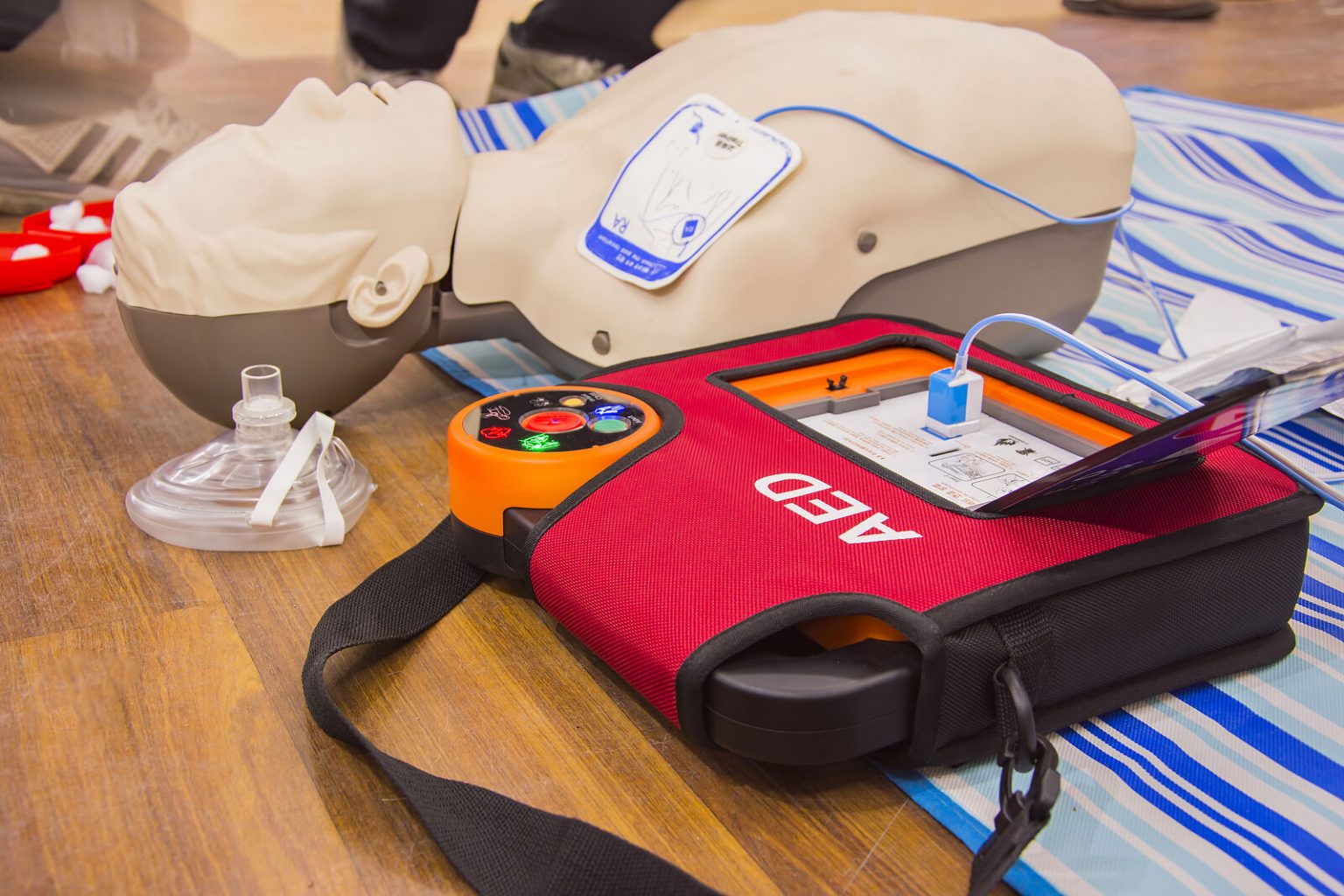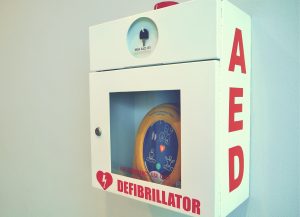If you’re a bystander during a sudden cardiac arrest, every second counts. You need to find and start using an AED rapidly in order to give the patient the best possibility of survival. What if you can’t find the building’s AED? What if you start to use it, only to discover that the batteries have expired? The chances of survival decreases by 7-10% for every minute that passes without defibrillation and CPR. If a bystander cannot quickly locate an AED, the consequences might very well be disastrous.
However, just having an AED machine isn’t enough! Users need to be able to locate the device, start utilizing it properly, and rely on it to be in good condition. AED program management can help you ensure that AEDs are readily available, locatable, and functional. That way, should a sudden cardiac arrest occur, you are ready to save a life.
What is an AED?
An automated emergency defibrillator (AED) is a lightweight, portable electronic device that is used in cases of sudden cardiac arrest. During cardiac arrest, the heart is no longer functioning correctly. It stops pumping blood to vital organs, including the brain. An AED will restore a regular heartbeat and help the heart start pumping blood again by delivering an electric shock to the heart and resetting its electrical system. You can learn more about how these life-saving devices work in an earlier post on our blog.
What Is AED Management?
Operation of an AED itself is pretty straightforward: these units are designed to be highly user-friendly, with voice prompts and automated processes to make sure that users have the highest possible probability of success. However, AED management overall is not quite as simple.
Automated emergency defibrillator management can be rather complex. There are a lot of components to consider, from battery life and condition, to device location, to compliance with your state’s laws. AED management allows you to coordinate all of this information and make sure everything runs smoothly. Ultimately, solid AED management helps ensure that your residential building, office, or facility is safe to be in!
The Benefits of AED Management
So, now that we’ve covered the basics, you might be wondering why AED management is so important. The following are just a few of the many benefits of AED program management:
-
Ensure Compliance With State Laws
Each state has its own set of laws detailing AED codes and requirements. AED management can help you keep track of your location’s legal specifications and help you follow the rules. For example, California requires that most buildings with an occupancy of 200 or more have an AED on site, including businesses, residential buildings, educational facilities, and many more. You can find out more about California’s AED requirements in the full California Health and Safety Code here.
-
Keep Devices Up To Date
An accessible AED can only save a patient’s life if it is functional. A damaged or expired unit might not work as quickly as an AED in good condition––and it could cost a life. Did you know that AED batteries can expire within 4 years? Or that AED pads can expire as well? AED management helps you keep track of expiration dates and battery condition, so that you can avoid the terrible situation of being stuck with an inoperable AED right when you need it most. You can set reminders to make sure devices are replaced before their expiration dates and that all equipment is completely up-to-date.
-
Make Sure Potential Users Are Trained
Another key consideration of your AED management program is user training. Although AEDs are fairly straightforward to use, proper training can make a big difference in the successful operation of an AED. In a moment of crisis, people tend to panic and are less likely to be able to follow the instructions. AED training will help you feel prepared should you ever need to use the device. In SureFire CPR’s Certification Classes, we cover AED usage and practice helping unconscious patients with simulations. Every moment matters; practice will help you make the most of your time and act with confidence.
-
Maintain Your Entire Property
Over 350,000 cardiac arrests occur out of the hospital each year in the U.S., many of which are in the home and in the workplace. If an AED is present at each of these places, everyone can be that much safer! If you have a bigger organization, multiple buildings, a campus, or any similarly large area, it is important to consider the radius around each AED and make sure there is one within range of all areas of the property. This might even mean having more than one AED on the property. AED management allows you to track each of your AED devices and keep tabs on both their condition and location.
Begin AED Management With SureFire CPR
Ready to get started with AED management? We can help! Our CPR Certification Class covers proper AED usage, CPR, and more.
At SureFire CPR, our goal is to help everyone be healthier, safer, and more prepared for emergencies. AED management is just one of many ways that you can be proactive about safety in your home or workplace. Our award-winning team of professional firefighters, paramedics, lifeguards, nurses, and EMTs have immeasurable experience with AED use, CPR, and much more. Feel free to contact us or give us a call at (888) 277-3143. We’re happy to help!
Buy your AED at Surefire CPR today!







